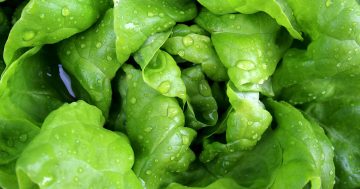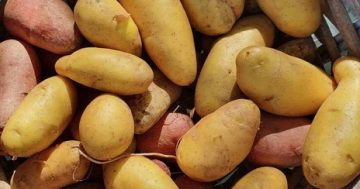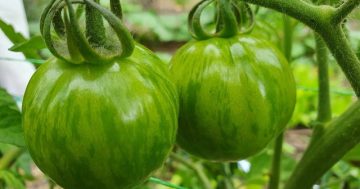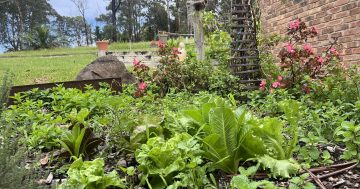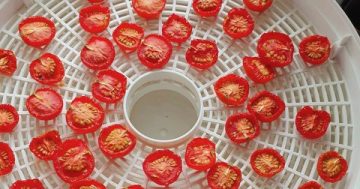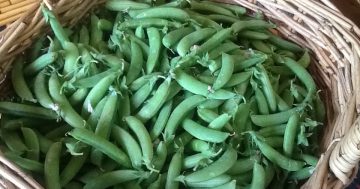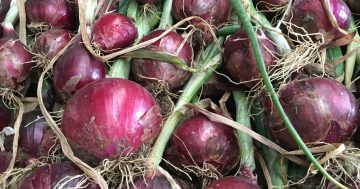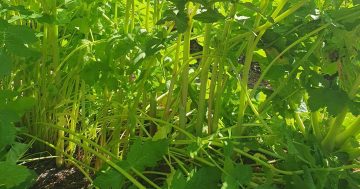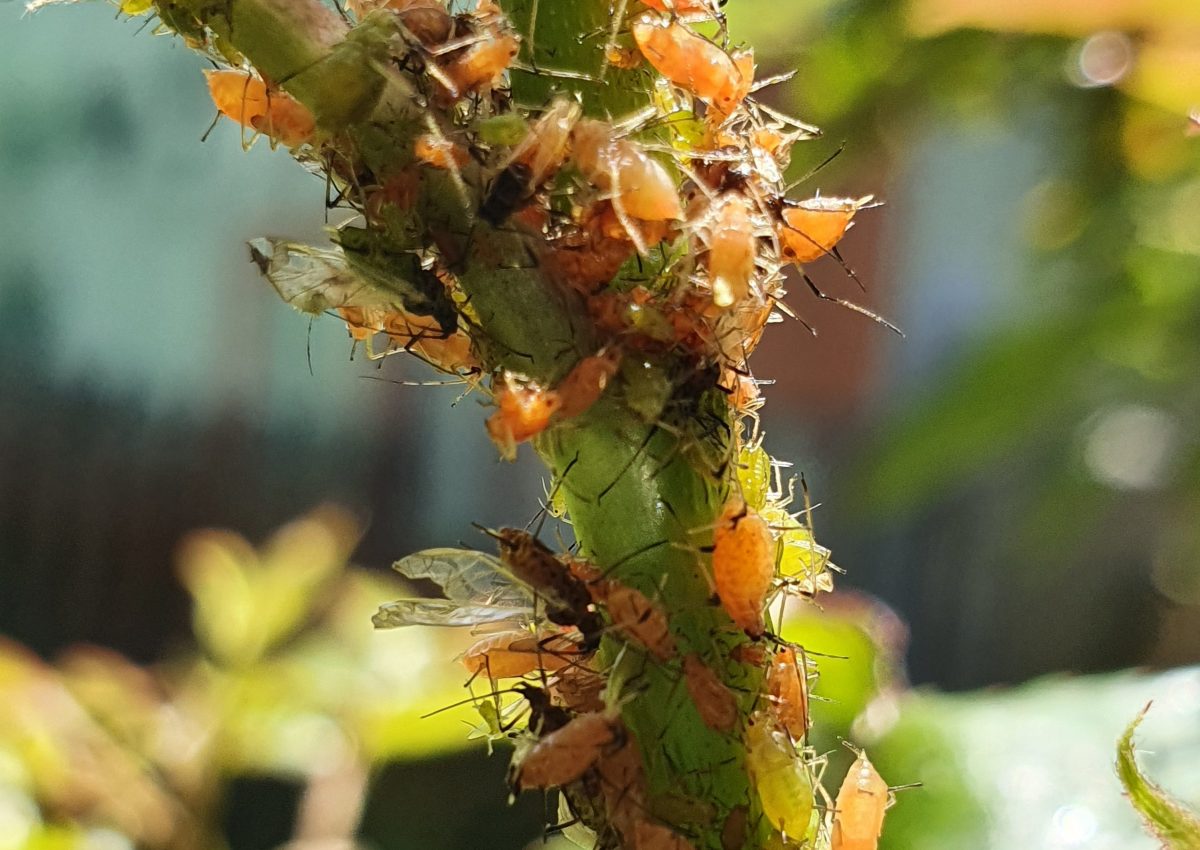
Aphids are a constant risk at this time of year. Photo: Supplied.
Get that fertiliser, and compost, out right now and start applying it to the wonderful vegetables you have been planting over late winter and early spring. The milder and wetter than average start to this transition season means that many of your vegetables are struggling to build their nutritional content.
Lots of plants, not just vegetables, are suffering from overly damp soils, compacted by periods of heavy rain over the past few months.
Your veggies and plants are fighting a surfeit of moisture, with water tables high and soils in many parts of our cool climate region, near saturation point. This means nutrient leaching and less oxygenation of soil as compaction drives out air molecules.
Very regular fertilisation and the addition of organic matter such as cut lucerne, leaf litter and whatever else similar you have on hand is the best way to keep your vegetables healthy and protect against compacted waterlogged soils.
Also, dispense with the liquid complete fertilisers and compost teas until the ground dries out a little. In the meantime, fertilise every two weeks with a pelleted complete fertiliser. This can simply be applied by sprinkling in the fertiliser around the plants.
Adding a lucerne or oaten chaff is easy because it is cut small and can be mixed into the top few centimetres of soil with a hand fork. This will just mitigate some of the soil compaction, and give the worms a little food treat in the process.

It’s time to feed garlic prior to harvest. Photo: Supplied.
It is also time to start fertilising your garlic regularly, at least fortnightly, and looking for signs of bulbing. Bulbing will start soon and needs regular feeding to ensure good sized bulbs.
To check for bulb development you can brush away the dirt from around the base of the stem. You should see a swelling begin under ground level.
Again, while a liquid fertiliser such as Seasol is a great way to feed garlic, in a La Nina wet season, this is not the best option. Using pelleted or dry fertiliser is a better way to go. Just sprinkle on the soil between the plants or in shallow trenches down the rows.
October and early November are critical months for garlic growth and it is best to check the plants regularly. Garlic planted in March/April is usually ready to harvest in November although timing may vary slightly depending on the growing season.
There are a number of indicators that help determine when garlic is ready. One indicator can be the growth of the scape or flower stem (which can be removed). This means it is very close to harvesting, often about a week or 10 days after scaping.

Watch garlic stems for signs of rot or bolting. Photo: Supplied.
Turban group garlics, early season varieties, such as Monaro Purple or Tassie Purple are varieties from the weakly bolting garlic groups and may or may not produce a scape, so this cannot be relied on as the only indicator of when the garlic is nearing harvest. The number of leaves remaining on the plant is the most reliable indicator.
You should aim to harvest when there are a minimum of five leaves on the plant. If you have planted from mid or late season, garlic groups’ bulb development will come later with harvest likely to be in late December to early January.
Keep an eye on your lettuces as aphids love to cosy up in the folds and curves of lettuce leaves.
A large patch of aphids can be rubbed off by hand or hosed off with a jet of water if you don’t want to use any kind of insecticide. However soap spray (insecticidal soap) or neem oil have very low toxicity with no lasting impact or harmful residue.
Unfortunately at this time of year aphids develop more quickly than their predators such as ladybirds and parasitic wasps, for example, Aphidius colemani (which are very tiny) and lacewings. But keep an eye out for the beneficial insects and give them a chance to build up in your garden.
The summer fruits such as tomatoes, eggplants, capsicum and cucumber may be planted a little earlier this year. Seedlings can go in from late October, as the cool wet weather reduces frost risk. Let’s be hopeful that there will be enough sun and warmth over summer for them to grow better than last year.
Bronwyn Richards and Helen Lynch run Wynlen House Artisan Village Farm and Learning Centre, a small village organic market garden in Braidwood, NSW. Since 2006 they have grown and sold fresh vegetables, eggs, preserves and garlic and teach others to do the same.
Original Article published by Helen Lynch on Riotact.



